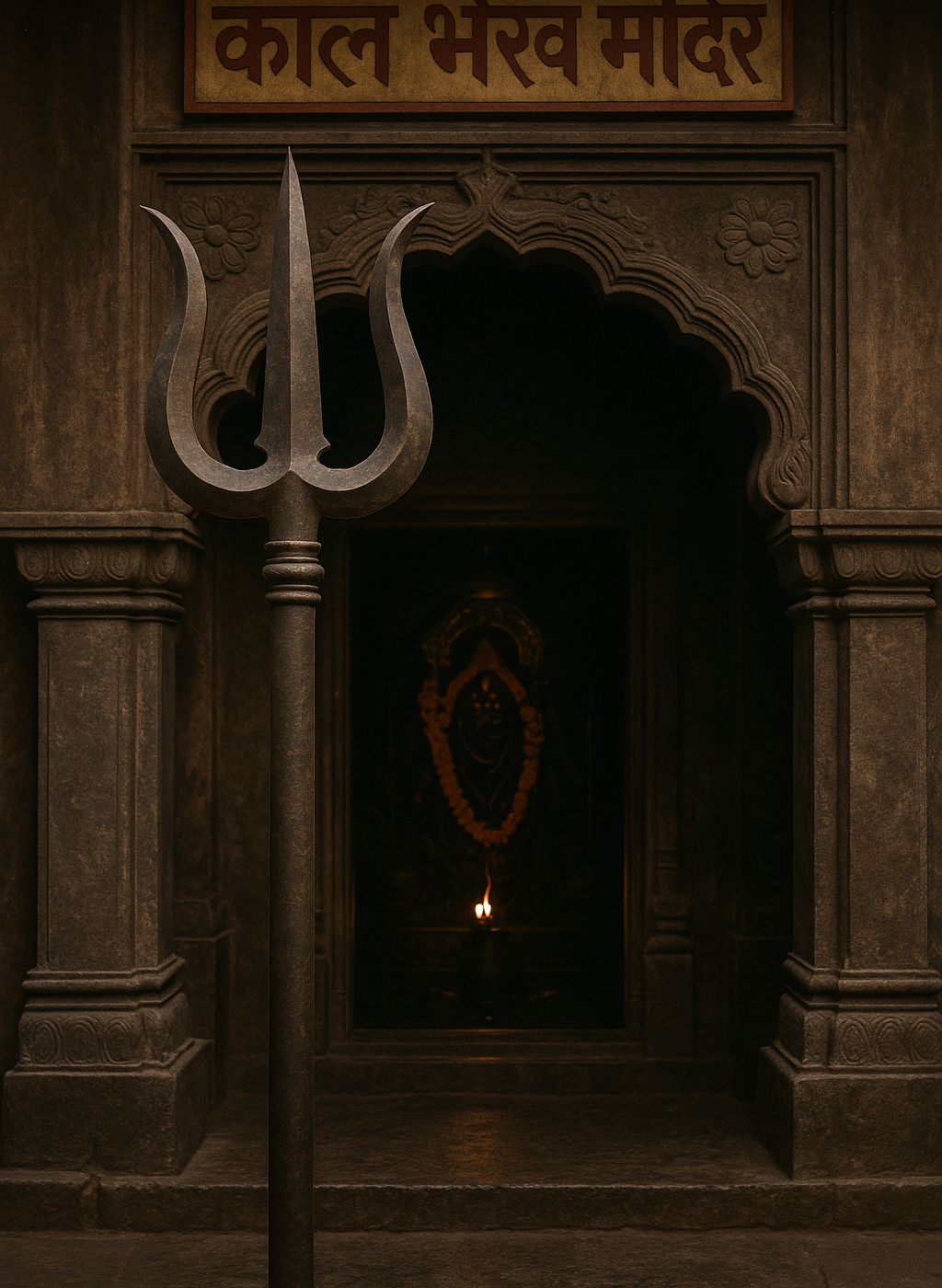The Kaal Bhairav Temple in Varanasi is one of the city’s most ancient and powerful shrines, deeply rooted in its spiritual fabric.
Dedicated to Kaal Bhairav, a fierce form of Lord Shiva, this temple holds immense significance for locals, pilgrims, and saints.
Known as the Kotwal (chief guardian) of Kashi, it is believed that no one can reside in or even enter Varanasi without the blessings of Kaal Bhairav.
Devotees worship him for protection, courage, and freedom from fear and negativity.
The Legend Behind Kaal Bhairav
The origin of Kaal Bhairav lies in one of the most profound legends of Shaivism.
When a debate arose between Brahma and Vishnu about supremacy among the Trinity, a cosmic pillar of light (Jyotirlinga) emerged before them. Vishnu accepted its boundlessness; Brahma lied about reaching its top. Enraged by Brahma’s arrogance, Shiva plucked a lock of his hair and hurled it to the earth. From that divine energy emerged Kaal Bhairav — the ferocious form of Shiva — who instantly severed Brahma’s fifth head.
Carrying the skull (kapal) of Brahma on his nail, Bhairav wandered endlessly, burdened by the sin of Brahma-hatya (killing of a Brahmin).
He found no absolution — not in any holy place, not in any world — until he arrived at Kashi, the eternal city. There, at the confluence of the Matsyodari Tirtha (now Machhodari) and the Ganga, the skull fell and vanished. Thus, Kaal Bhairav attained liberation, and the place became sacred as Kapal Mochan Tirtha.
Kaal Bhairav Temple Today
The current Kaal Bhairav Temple stands near Vishweshwarganj, built in the 17th century by Maratha commander Sardar Vinchurkar. Crafted in Nagari style, this shrine now serves as the spiritual courthouse of Kashi.
Local belief holds that no one can reside or even perform rituals in Varanasi without the blessing of Kaal Bhairav. Even modern-day police officials and public servants offer prayers before assuming duties here.
Unique Traditions and Offerings
Inside the temple, the idol of Kaal Bhairav is often veiled, radiating an awe-inspiring energy.
You’ll find priests sweeping away evil with peacock-feather brooms, and devotees tying sacred threads (Ganda) on their wrists for protection.
Common offerings include:
-
Mustard oil
-
Black cloth
-
Flowers, sweets, and incense
-
Liquor (on specific occasions) – a symbolic gesture of surrendering ego
Other Shrines in the Complex
The temple compound also includes smaller shrines dedicated to:
-
Navgraha (Nine Planets)
-
Goddess Durga
-
Lord Hanuman and Ganesha
-
Shvan (the dog, Bhairav’s divine vahana)
Major Celebrations and Festivals
-
Bhairav Ashtami – Celebrated in the dark half of Kartik month (Nov–Dec), considered his appearance day.
-
Mahashivratri – Devotees flock here before visiting Kashi Vishwanath.
-
Annakoot – A massive food offering festival.
-
Every Tuesday and Sunday – Auspicious for Bhairav worship.
Temple Timings
| Season | Morning | Evening |
|---|---|---|
| Summer | 5:00 AM – 1:30 PM | 3:00 PM – 10:30 PM |
| Winter | 5:30 AM – 1:00 PM | 3:30 PM – 10:00 PM |
Aartis:
-
Mangala Aarti: 4:00 AM
-
Bhog Aarti: 12:00 Noon
-
Sandhya Aarti: 7:00 PM
-
Shayan Aarti: 11:00 PM
How to Reach
Walking Distance from Maidagin/Chowk
Easily reachable via rickshaw, auto, or e-rickshaw from any part of the old city


